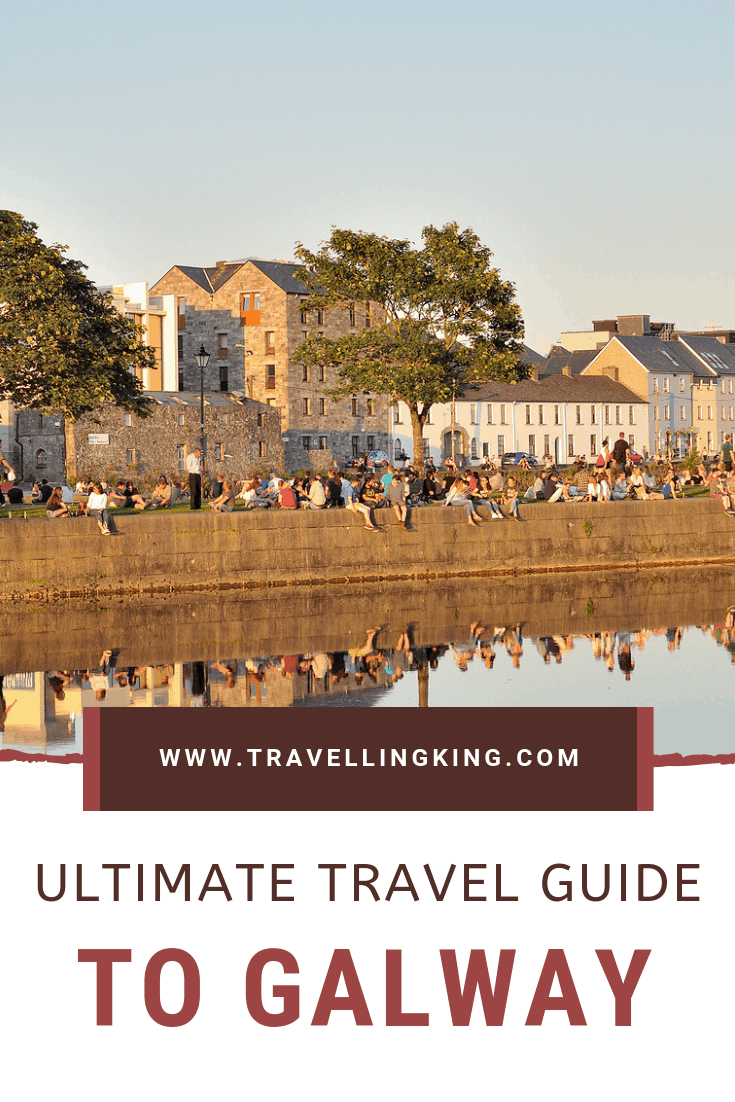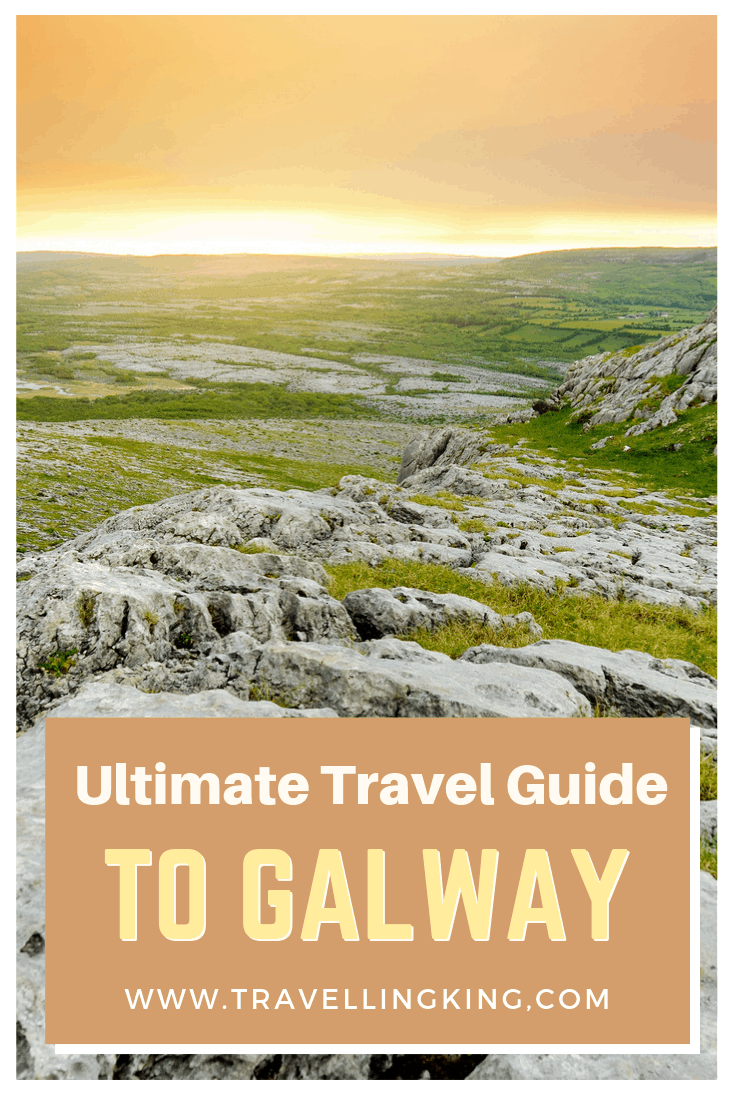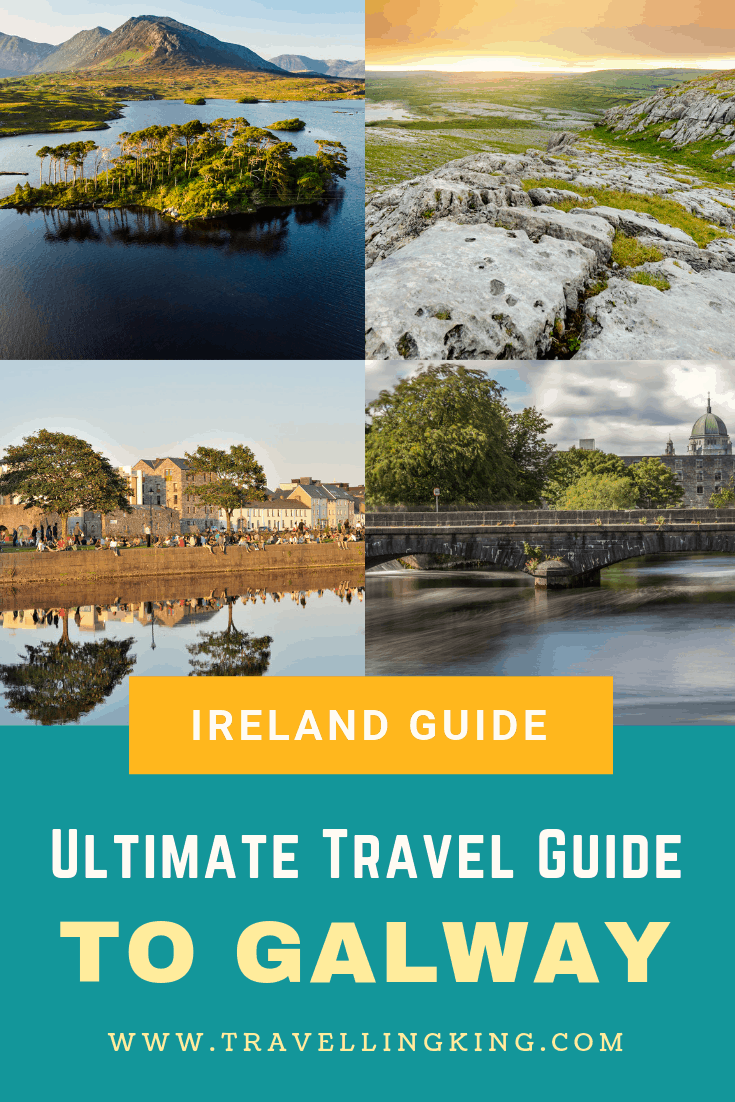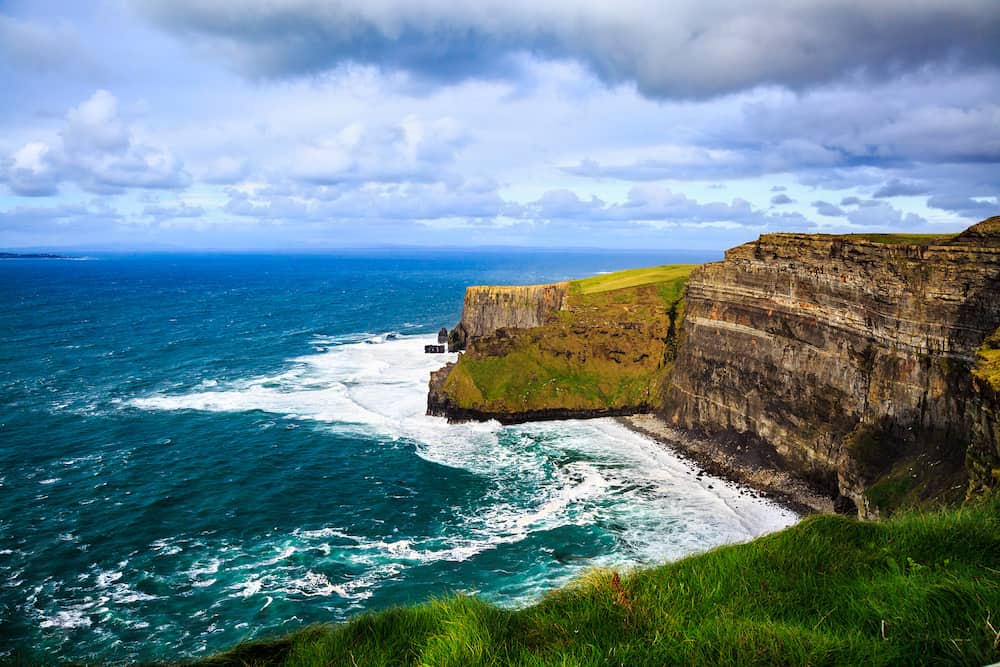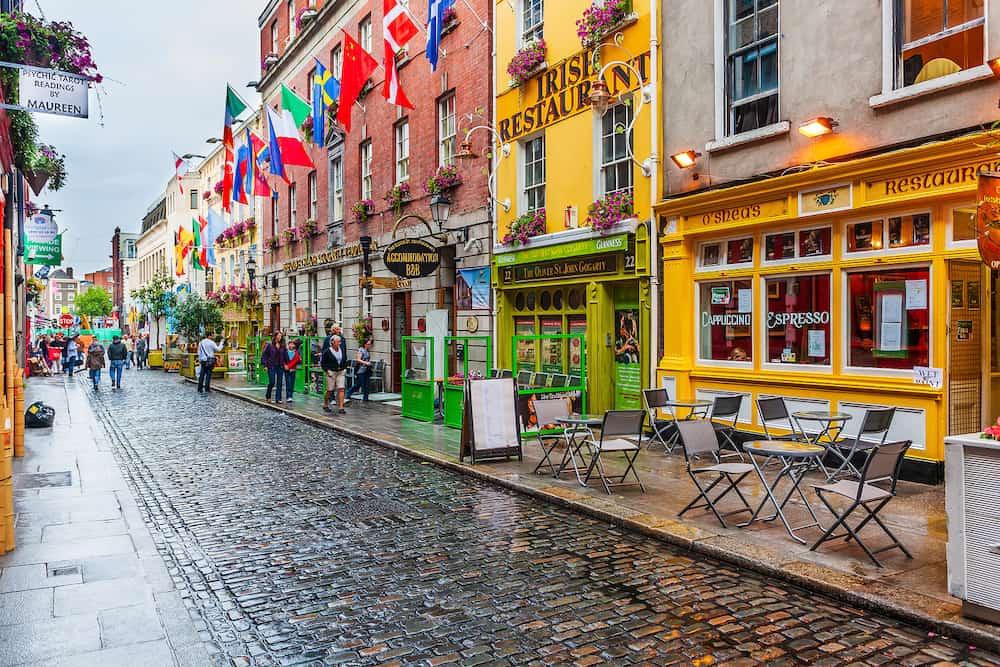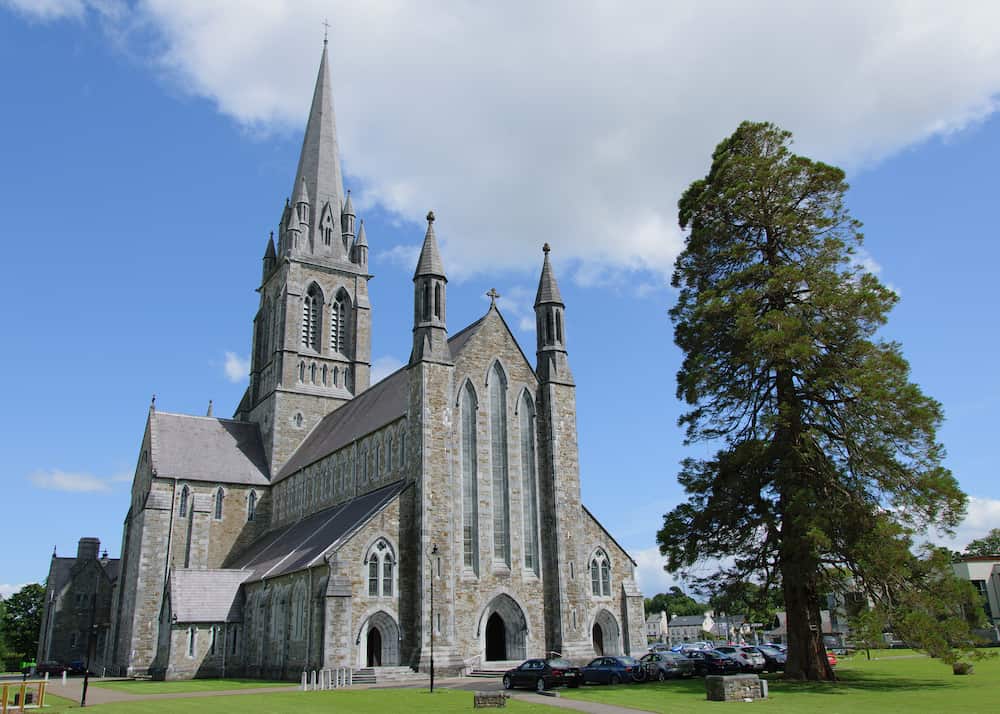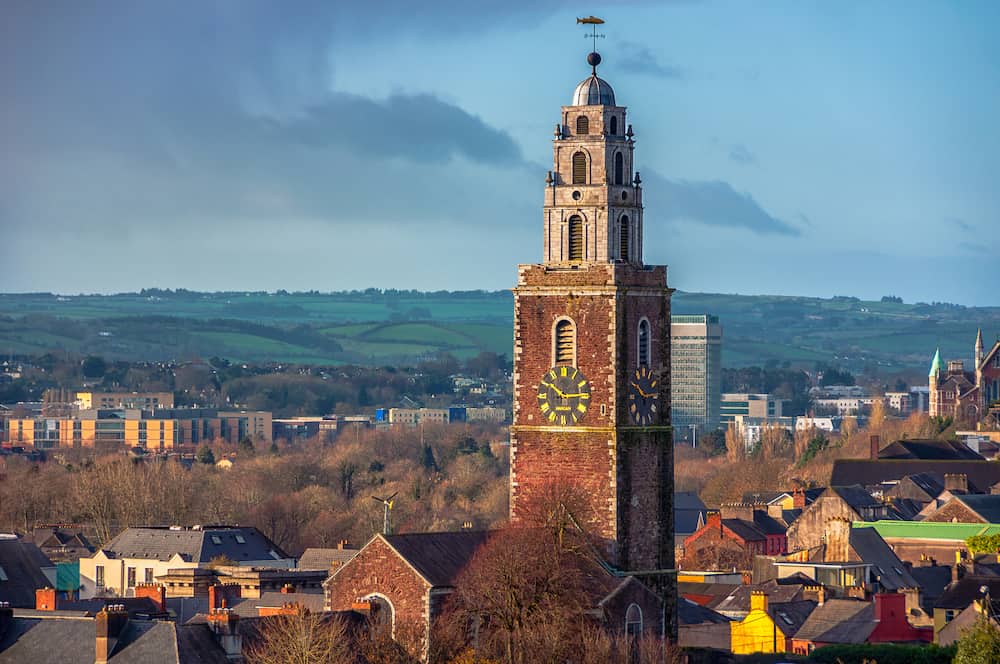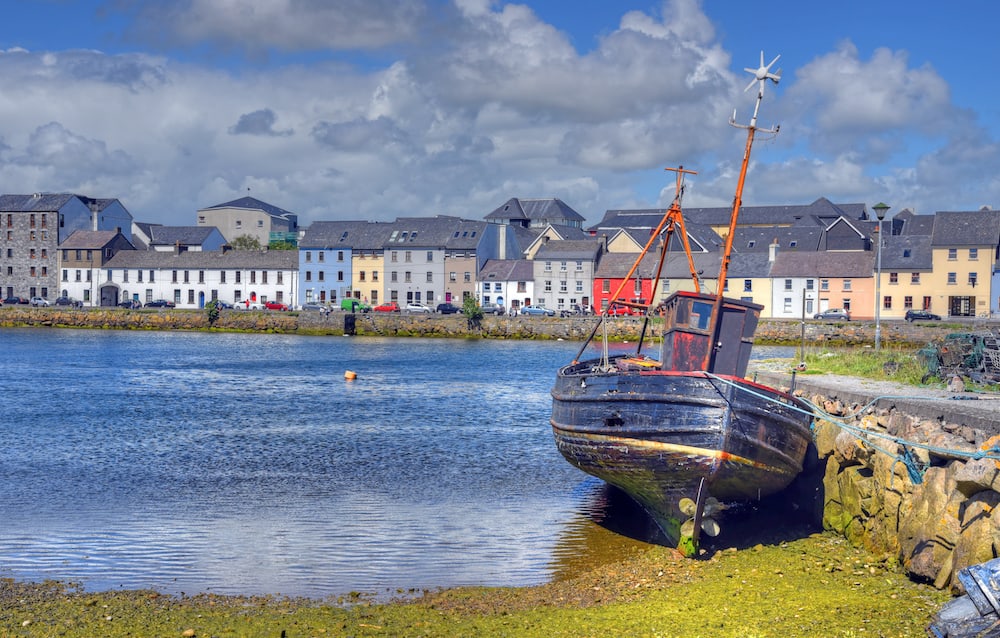Ultimate Travel Guide to Galway
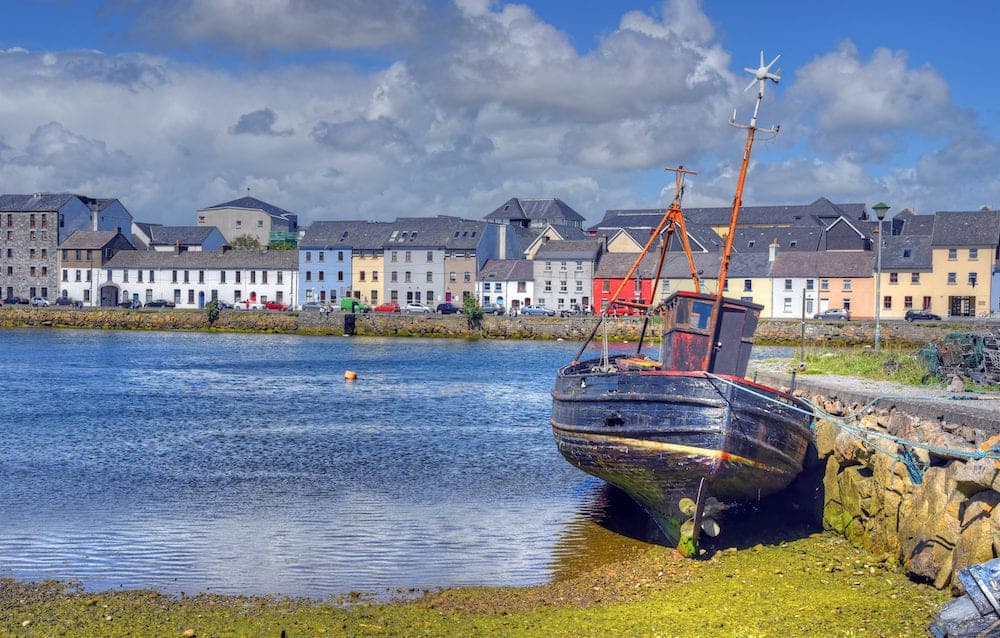
Galway city is a cultural feast for travellers and the gateway to the west coast of Ireland. This historic city is located along the Wild Atlantic Way, overlooking Galway Bay and within easy reach of iconic natural sights such as the Cliffs of Moher and The Burren.
Galway is set to be the European Capital of Culture in 2020, and the city is known for its lively artistic and musical scenes, as well as its excellent pubs and restaurants. You can find buskers along the cobblestone streets of the Latin Quarter and live bands every night of the week playing in the ramshackle pubs and taverns.
From the city, you can take a boat ride through the crashing waves of the Atlantic Ocean to the remote and isolated Aran Islands, where traditional Irish culture and language has survived in a way that’s often been lost on the mainland.
You can cruise along the River Corrib, visit local museums and galleries, and enjoy the best things to do in Galway Ireland.
This ultimate travel guide to Galway will show you all the most beautiful places in Galway, what to expect when visiting, where to stay in Galway and things to do in Galway which will help you in planning a trip to Galway.
Plan your trip
Save on fees abroad with the Wise Card—use it at ATMs, restaurants, and for flights or hotels in over 150 countries. Manage 40+ currencies in real-time with the Wise app.
Need Help Planning?
- Cheap Flights: Find the best deals.
- Accommodation: From hostels to luxury stays.
- Car Rental: Affordable options worldwide.
- Sightseeing Tours: Explore without breaking the bank.
- Travel Adapter: One adapter for all your needs.
- Travel Insurance: Don’t risk it—stay covered.
This post includes affiliate links. Read my full disclosure and content policy.
How to get to Galway
Located on the west coast, in County Galway, the city has great transport connections to the rest of Ireland but no longer has its own dedicated airport. The closest airport to fly into is Shannon Airport, which is just an hour to the south.
Here you can pick up a rental car or take a direct bus to Galway. There are frequent flights to Shannon from across Europe – with low-cost carrier Ryan Air, in particular – as well as several transatlantic flights to the United States.
From Dublin, on the east coast, it’s a two and a half-hour drive to Galway. There are regular bus connections through the day, and several train connections too. Dublin’s international airport has more connections than Shannon and can be a great place to fly into as well.
What to expect in Galway
Galway is a small city, but it’s packed with things to do, and you’ll find that the charms and quirks of west coast Ireland might well keep you here longer than you were anticipating.
Some traditional strongholds on the west coast still speak Gaelic – including the Aran Islands – but English is the predominant language in Galway. The currency of Ireland is the Euro, and you’ll find money changers, as well as plenty of banks and ATMs in the city.
Galway is as safe to visit as anywhere in Ireland, and you’ll find the locals to be hospitable and helpful. If you are venturing into the national parks – at least to the more remote areas of wilderness – then always keep an eye on the weather conditions for your safety.
How to get around Galway
Galway is easy to navigate on foot and most of the major sights in the city are within walking distance of one another. The historic districts date back to the medieval era and many streets are still cobblestone, so you will want to wear sturdy footwear when walking around.
These medieval streets can also be somewhat of a maze to find your way around, so make sure you pick up a map of the city to avoid getting lost all the time.
There are local bus connections around the city and to nearby destinations, while from the city, you can easily join day tours to the nearby Aran Islands, the River Corrib and to the surrounding national parks.
If you want more flexibility then it can be worth renting a car to explore further afield, as public bus connections to rural areas are infrequent. In the city though, a car can be more hassle than it’s worth, as parking is incredibly limited.
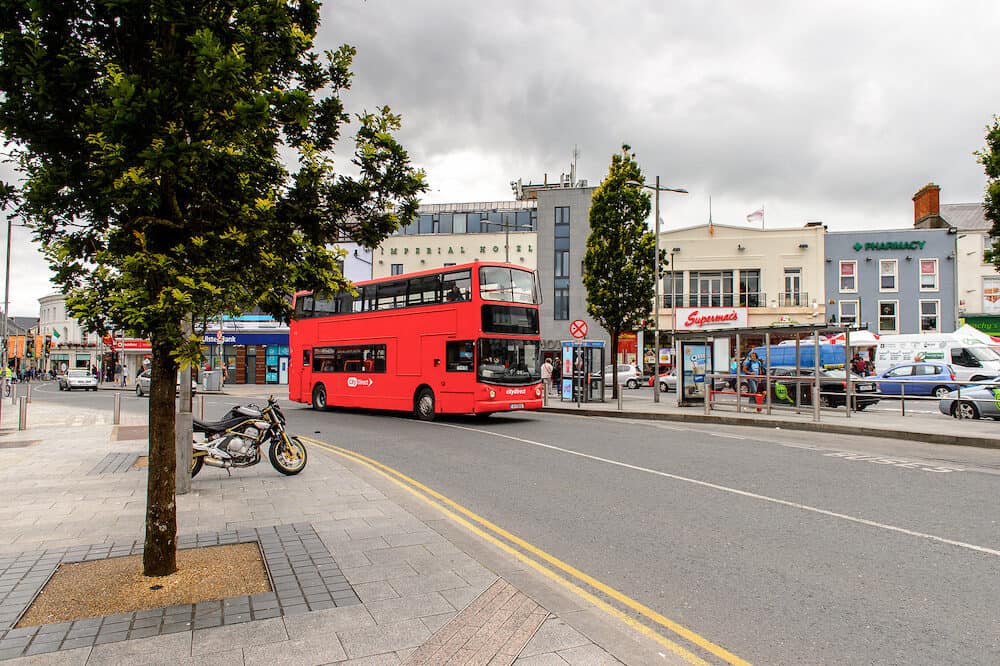
The best time to visit Galway
Ireland is notoriously rainy, and no matter what time of the year you visit – even the height of summer – the weather can take a turn for the worse with little warning, so it’s always best to be prepared with wet weather gear.
Ireland has high levels of rainfall, and storms can sweep in from the Atlantic Ocean. The weather is best in summer, of course, between June and September, but this is also when it’s busiest. As an incredibly popular Irish destination, Galway gets crowded during peak season.
The shoulder seasons, spring and autumn, can be much quieter, and you can get great deals on accommodation and flights too, but the weather is unpredictable. This can be a good time to go hiking in the national parks though, as it’s not nearly as hot as summer.
Winter is cold, dark and rainy, but visit over Christmas and New Year and you’ll find Galway hosts many markets and festive events to liven the dreary days up. Many tour companies close down over winter, and outdoor activities are usually put on hold until the spring.
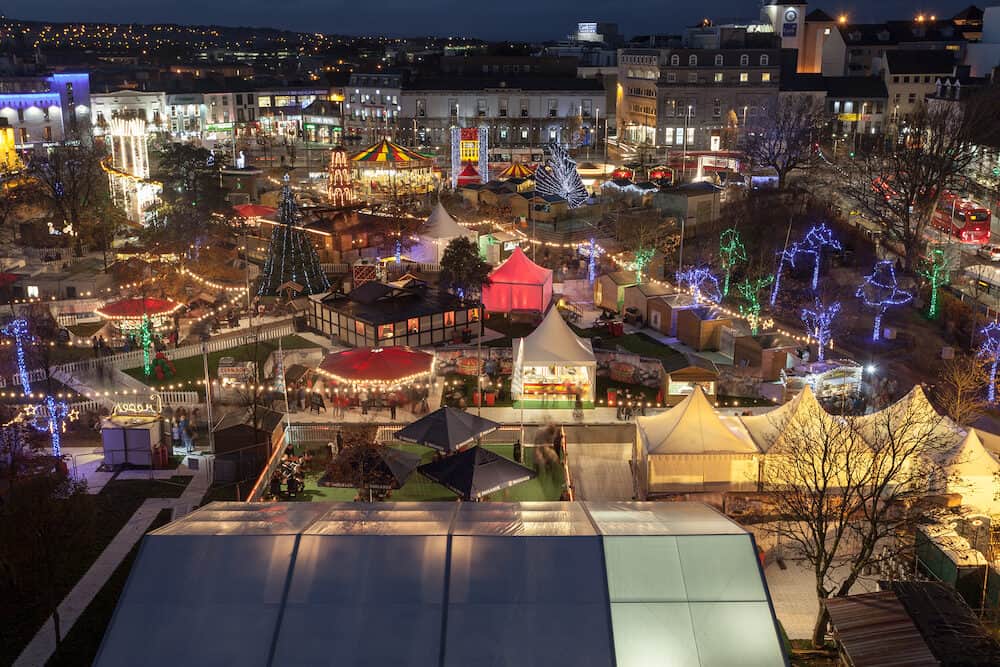
Things to do in Galway
Latin Quarter
If you’re wondering what to do in Galway when you first arrive in the city, then head straight to the Latin Quarter. This is the most historic part of Galway, where you’ll find the cobblestone streets and ramshackle medieval buildings.
It’s a picturesque area, and here you’ll find all the best pubs, shops and restaurants. Stroll through the maze of streets and enjoy the colourful, artsy, yet historic vibe as you see Galway at its best.
Galway City Museum
If you’d like to learn more about the history of Galway and the surrounding area, then call in at the excellent Galway City Museum. You’ll find archaeological finds and medieval exhibits on display here, as well as plenty of informative storyboards.
The best part about the Galway City Museum is that it’s totally free to enter.
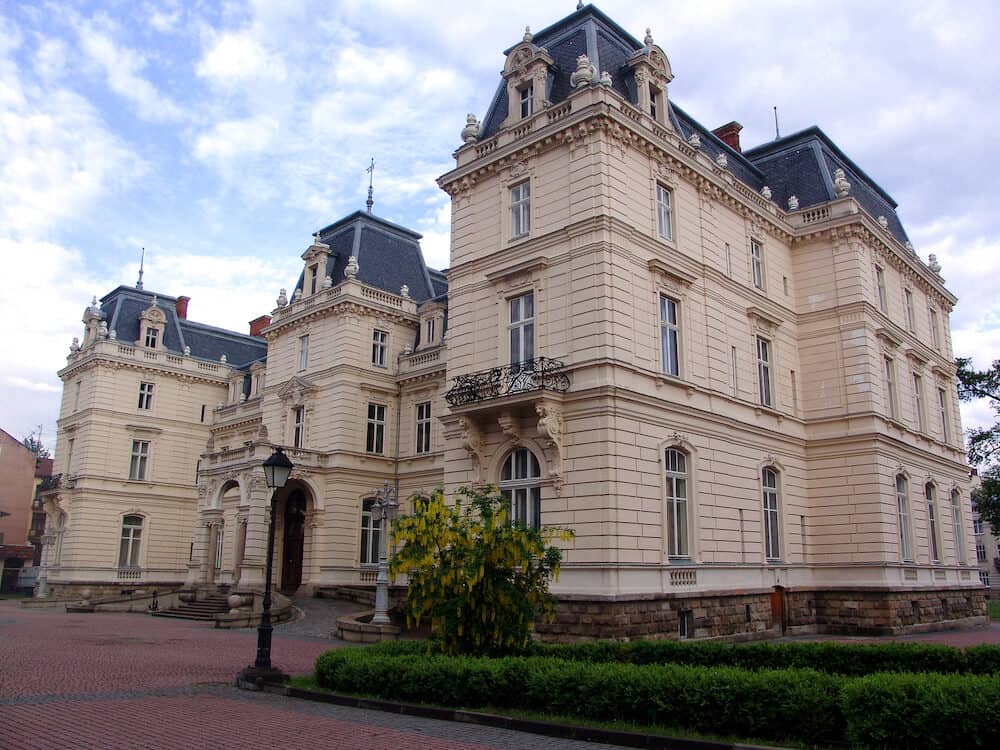
Eyre Square
Eyre Square is the modern heart of the city, as this great public space was redeveloped in recent years, and has become a popular hang-out. It’s partly pedestrianized and right next to the train station.
You can relax by the fountains, stroll around and call in at the shops and restaurants on the edge.
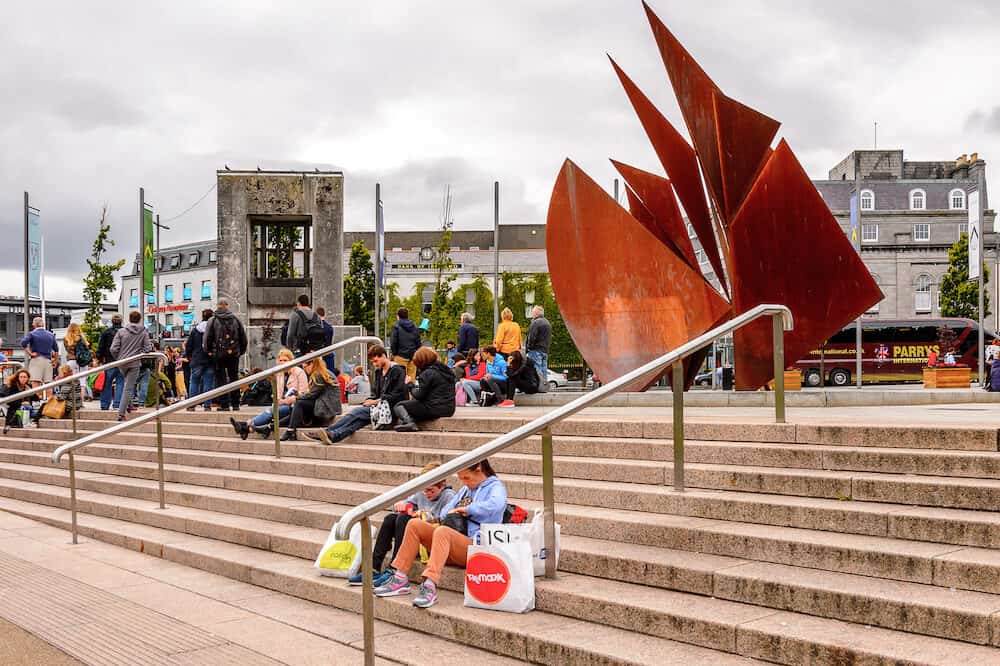
Spanish Arch
Galway was once a walled medieval town, but most of these historic fortifications have long since been lost or redeveloped. One remaining structure that still stands proud though, is the Spanish Arch.
This is one of Galway’s most iconic sights. It dates back to the 16th century, and once formed the core of the city’s defensive line.
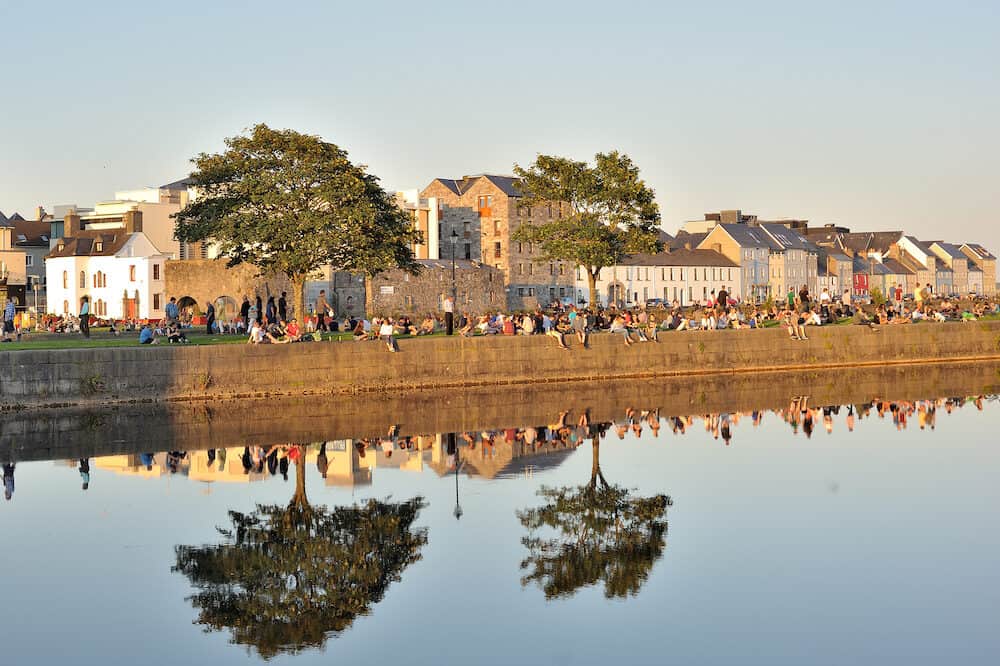
Salthill Promenade
If you’re looking to escape the city centre, then take a stroll along the Salthill Promenade. Located an easy 20 minutes walk from the historic centre, the promenade runs along Galway Bay.
You can gaze out over the rough seas of the Atlantic, while you enjoy fish and chips or a drink overlooking the ocean.
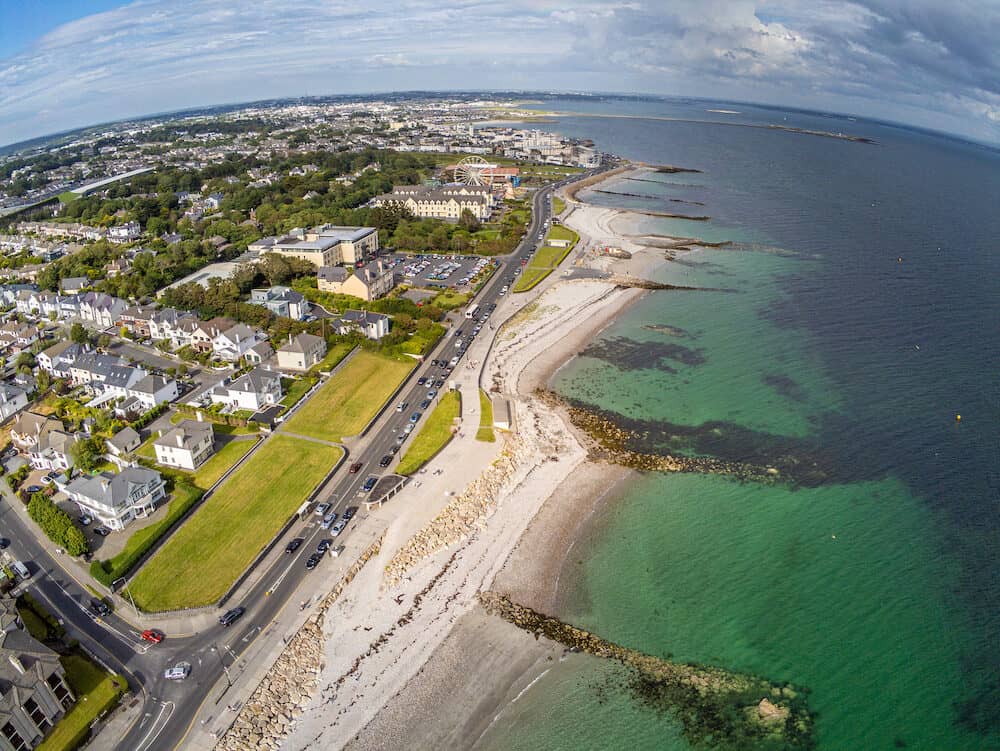
Galway Cathedral
Another iconic sight in the city, is the Galway Cathedral. This grand church is the centre of the Catholic religion in Galway, and the large dome forms an integral part of the skyline.
The cathedral is actually relatively new – especially considering Galway’s rich medieval heritage – and only dates back to the mid 20th century.
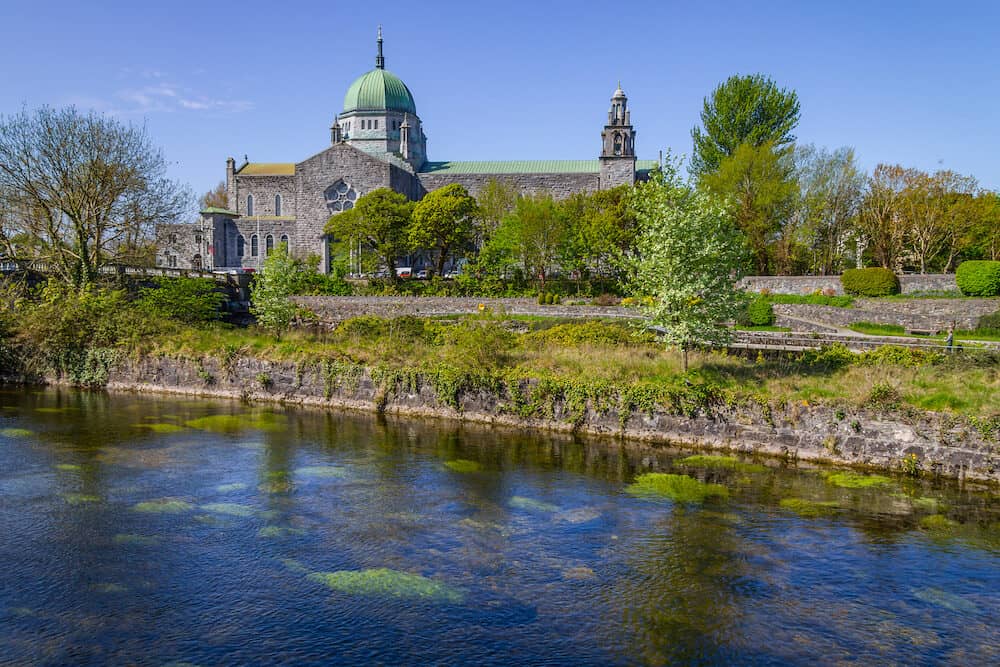
What to eat in Galway
Galway has an excellent culinary scene, and in the city you can find a range of both local and international restaurants serving up both traditional and fusion food.
The city is best known for its seafood – it is located on the Atlantic Ocean, after all – and in particular Galway has an exceptional reputation for shellfish. Galway Oysters are famed across the country, and if you try one dish in the city, make it this one.
Fish and Chips – of the deep fried variety, of course – is common to find in the pubs, as are more hearty Irish dishes such as Irish Stew and, for breakfast, a Full Irish.
On weekends, head to Church Lane, where you can find a bustling local market dedicated mostly to food. Here you’ll find a fantastic selection of street food and eats from around the world, ranging from curries to kebabs.
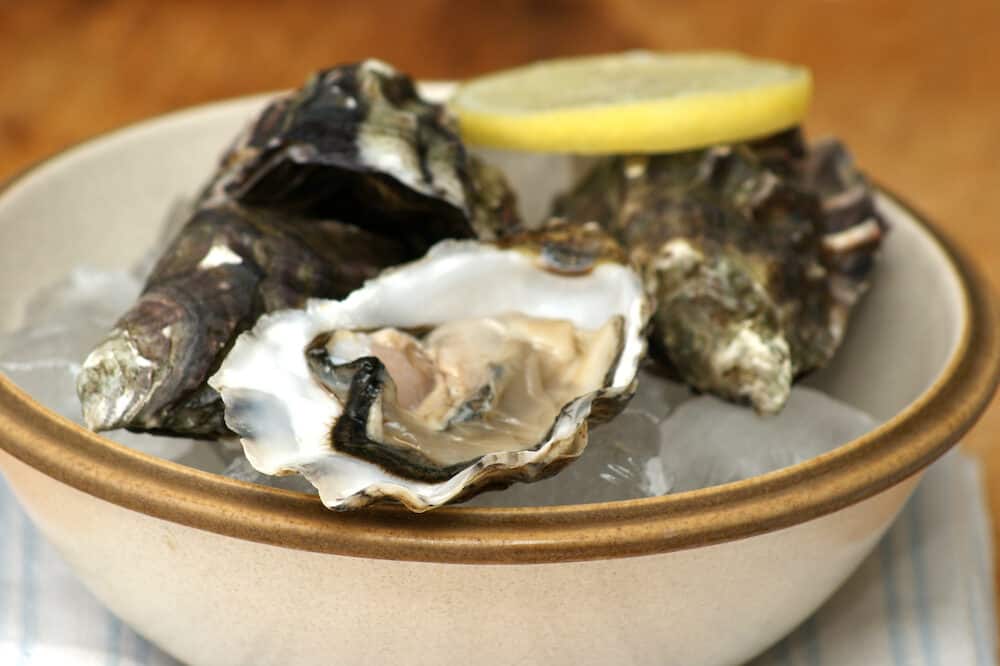
Where to stay in Galway
Galway has a great range of accommodation, from hostels through to charming bed and breakfasts, boutique hotels, Airbnb is also a great option for short or long stays. In peak season and over any school holidays, the best accommodation can get snapped up quickly, so book in advance where possible, especially in summer and over Christmas.
Hostels – Galway City Hostel is a great choice for solo travellers, as the hostel has a lively bar, hosts live music nights and is a great place to meet people.
Bed and Breakfasts – Galway, in tune with the rest of Ireland, has a lot of Bed and Breakfasts, and these are a great place to book if you want to support local businesses and have a more homely environment.
Many B and Bs are located outside the centre in quieter areas, while in many rural locations, B and Bs might be the only option. A popular B and B is the Salthill Ocean Villa, which is found along the promenade overlooking the Atlantic.
Luxury – Galway’s luxury offerings are more limited, but one of the best choices is Glenlo Abbey Hotel, which is set in a beautiful 18h century manor house and estate, just outside the city. Closer to the action, Hotel Meyrick is a fantastic choice next to Eyre Square, complete with a spa and gourmet restaurant.
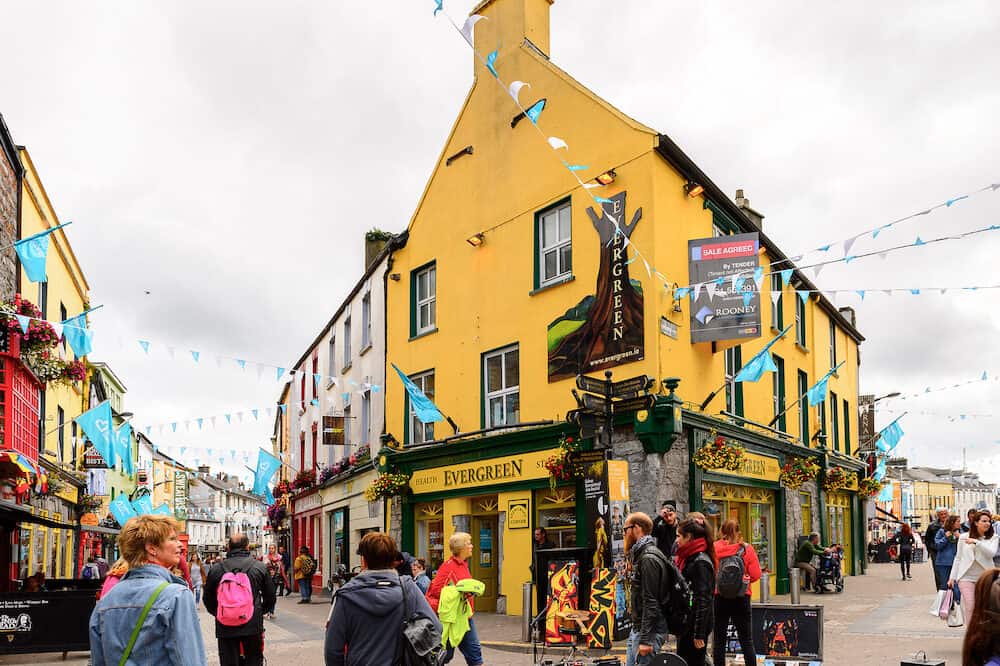
Tours to do in Galway
Corrib River cruise
The Corrib River is the main waterway that cuts through Galway, before flowing into the bay, and one of the best tours to join in the city is a Corrib River cruise.
Beginning in the city centre, at Woodquay, the cruise only runs in peak season, but takes you far along the Corrib River, and up to the Corrib Lough.
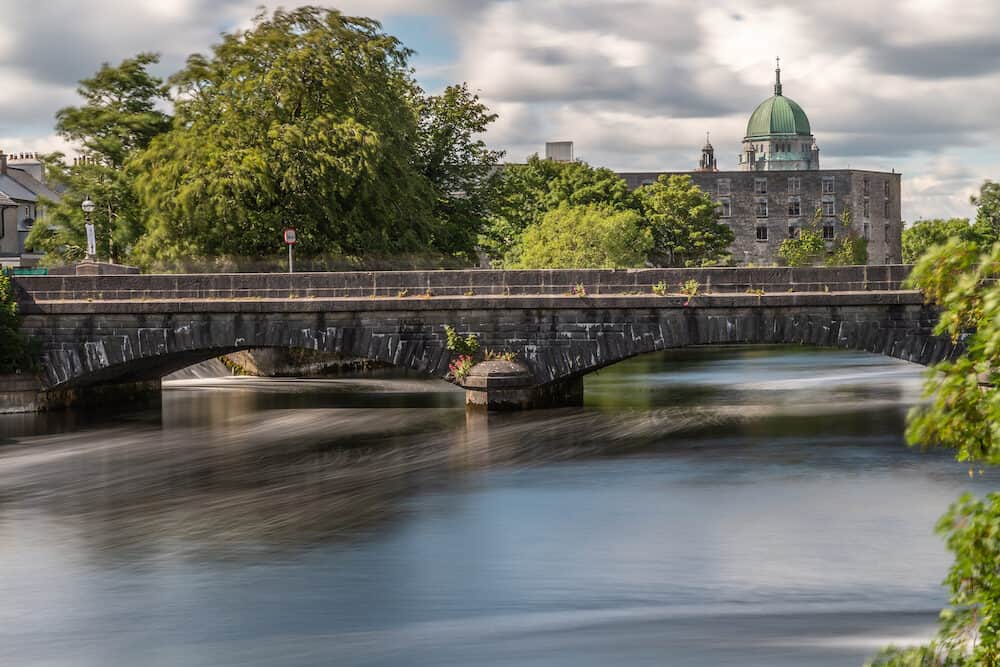
Food Tour
Galway has an ever-growing reputation as a culinary city, and one of the best ways to get acquainted with the best eateries is to join a food tour.
You’ll be taken to the best local cafes, restaurants and market stalls, as you try the best food that Galway has to offer.

Hop on Hop Off Bus Tour
Like many major tourist destinations around the world, Galway has its own Hop on Hop off Bus Tour. You’ll get to see the best sights in Galway, as you jump on and off at the most iconic attractions in the city.
It’s a great way to learn more about Galway, while at the same time not having to worry about getting lost in the city.
Day trips from Galway
Aran Islands
Located out in Galway Bay, the Aran Islands are one of the last remaining strongholds of truly traditional Irish culture in the country.
These remote islands are rugged and windswept, and due to their isolated location, managed to retain much of their heritage.
The primary language here is Gaelic, and you’ll find landscapes and villages that seem to have changed little over the centuries.
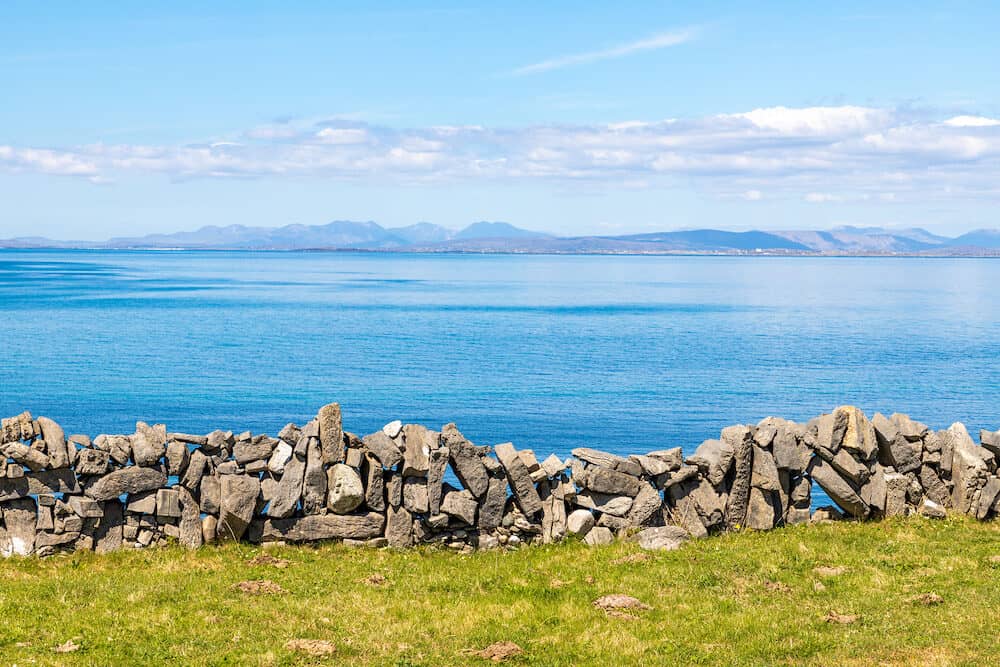
Cliffs of Moher
The Cliffs of Moher are one of Ireland’s most popular natural sights. You’ll soon see why when you stand on the edge of these dramatic sea-cliffs and watch the powerful waves crashing into the rocks over 100 metres below.
The cliffs stretch for miles along the Wild Atlantic Way, and as long as the weather is good, it’s the perfect place to go hiking.
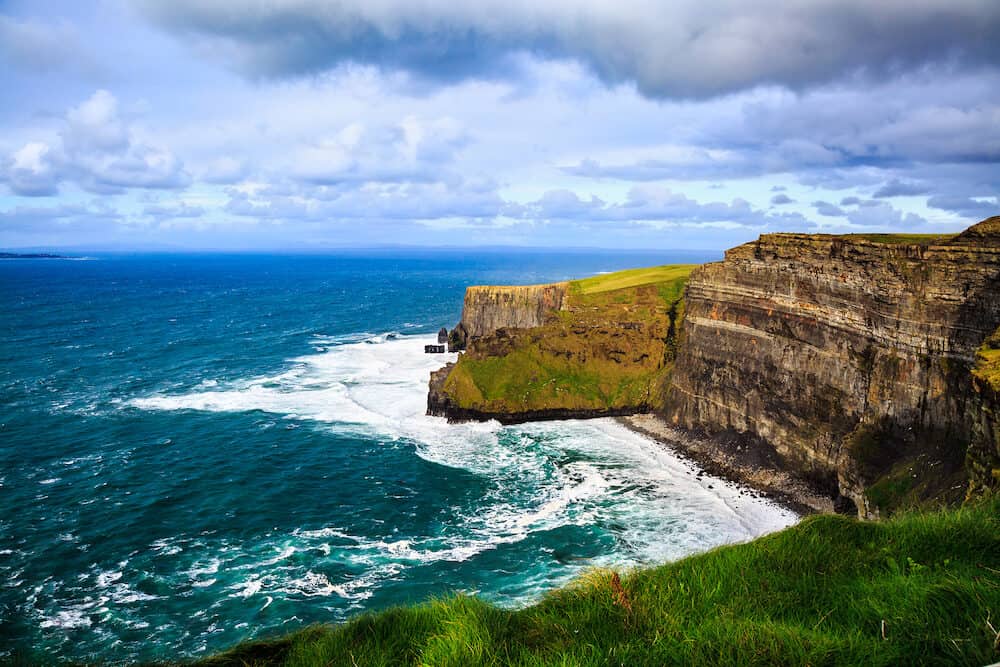
The Burren
The Burren is a small national park in County Clare that offers visitors the chance to see one of Ireland’s most otherworldly landscapes.
This is an area with a rich geological history, and over time unusual kart rock formations have formed across the wilderness. It’s a place that would look more at home in Iceland, rather than Ireland, and it’s just a day trip away from Galway.
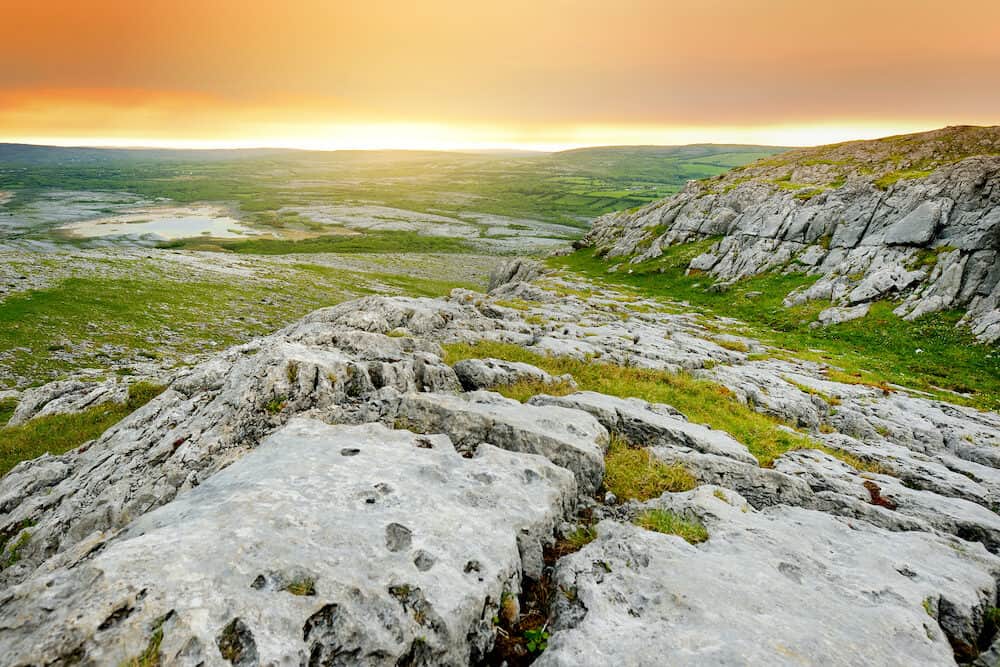
Connemara
Another beautiful national park to visit, is Connemara, which is located close to Galway. This is a great place to go hiking, as you can find a vast array of landscapes, from mountains to marshes.
In the Connemara area, you can also visit the striking Kylemore Abbey, a Benedictine abbey which overlooks the waters of a shimmering lough.
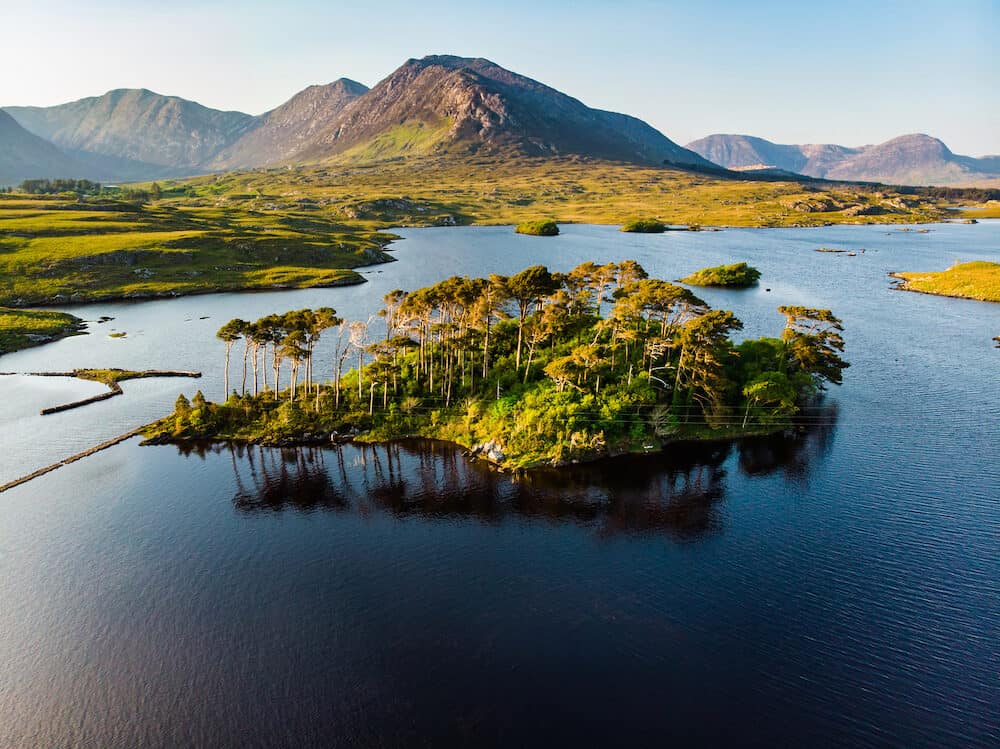
Recommended tours in Galway
- Cliffs of Moher Day Trip from Galway
- Aran Islands and Cliffs of Moher Day Trip from Galway including Cliffs of Moher Cruise
- Connemara Day Trip from Galway: Kylemore Abbey and Ross Errily Friary
- Galway Food and Drink Walking Tour
- Independent Cliffs of Moher Half Day Trip from Galway
- Cliffs of Moher, Burren and Wild Atlantic Way day tour from Galway city
- Galway to Cong Full Day Tour
- Private Oyster Tour and Tasting with Locals by Flaggy Shore
- Galway Cheese Tour and Tasting by an Artisan Cheesemaker
- Irish Whiskey Tour of Galway
- Beach horseback ride along the scenic Wild Atlantic Way, Connemara.Guided 3hrs
If you’d like to save it for later, please save it to Pinterest.
